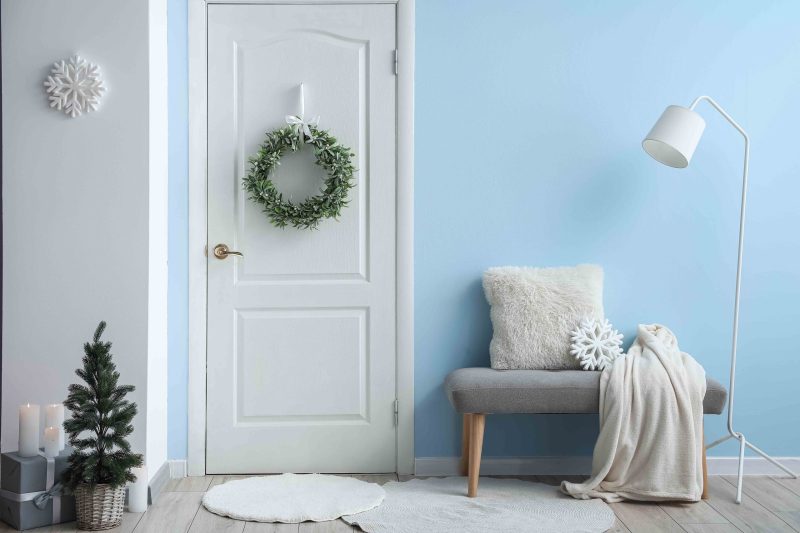When you choose a door, you’re not just picking size or shape. You’re picking how it looks every day. And how well it handles daily life. That’s why finishes matter. In most Indian homes, the top two choices are laminated doors and veneer doors. Both look good. But they behave very differently over time.
What’s the Difference, Really?
Laminated doors are covered with a printed sheet that mimics wood, stone, or solid colors. The sheet is pressed onto the surface at high temperature. It’s durable and consistent. Veneer doors use thin slices of real wood pasted onto the surface. They give you the real texture and grain of wood.
Both offer style. But one handles wear better. The other offers a more premium look. Your choice depends on how you use the door and where it’s placed.
In high-traffic areas, laminated doors make more sense. They resist scratches, stains, and bumps better. You can clean them easily with a damp cloth. Kids can slam them. Pets can brush against them. Guests can lean on them. Laminated doors take it all and still look clean.
Laminated Doors Work Hard
In apartments, offices, and rental properties, laminated doors are preferred because they need less maintenance. You get the look of wood or any pattern, without worrying about fading or cracking.
Veneer Doors Are for Style-First Spaces
Veneer doors are all about elegance. They use real wood, so no two doors are exactly the same. You get natural variation, warmth, and depth. But veneer needs care. It can stain. It can fade in direct sunlight. You can’t scrub it the way you do with laminates. Veneer doors are best used in places that see less chaos, like a formal living room, master bedroom, or a study.
Daily Use Changes Everything
In Indian homes, some doors open 20 times a day. Kitchen, bathroom, balcony-these see rough use. In these places, laminated doors make sense. They’re built to take that kind of load. On the other hand, guest rooms, lounges, and quieter areas are better suited for veneer doors.
- Laminated doors resist scratches; veneer needs protection
- Laminated doors are easier to clean; veneer needs careful wiping
- Laminated doors offer consistent color; veneer offers real wood grains
- Laminated doors suit rough use; veneer is better for soft use
- Laminated doors are budget-friendly; veneer adds luxury
Maintenance is a Big Factor
Laminated doors don’t need much. Wipe them down. That’s it. No polishing, no special cleaners. Veneer doors need more care. You need to keep them away from too much water, use gentle cleaning agents, and polish them once in a while to keep them looking good. That’s why maintenance should be a big part of the decision.
Cost Tells a Story Too
Laminated doors cost less. That makes them ideal when you’re furnishing a whole house or apartment. Veneer doors cost more, because they use real wood. But for key spaces, people still choose veneer because of the look and feel it brings. If you’re mixing both in one home, many choose laminated doors for everyday spaces and veneer doors for show spaces.
Looks Matter, But So Does Longevity
It’s easy to fall for a design. But designs fade. What matters is how the door handles time. Laminated doors don’t change color much. Veneer doors do. Over the years, sunlight, dust, and polish can change how a veneer door looks. That can be good if you like aged wood. Not so much if you want it to look the same as day one.
Design Flexibility Favors Laminates
With laminated doors, you get more choices-wood, stone, colors, metallics. You can match the door to the wall, the furniture, or even the flooring. Veneer doors are more limited. You get what the wood grain gives. Yes, it’s beautiful, but not as versatile. For people who want a modern or patterned look, laminated doors give more room to play.
Humidity and Heat Play a Role
In places like kitchens or bathrooms, or cities with high humidity, laminated doors perform better. They don’t absorb moisture. They don’t warp. Veneer doors need to be sealed properly. If not, they can peel or bubble. That’s why the location inside the home should influence your choice.
Conclusion: Choose Based on How You Live
The finish on your doors affects how they look and how long they last. Laminated doors are tough, easy to maintain, and good for active spaces. Veneer doors offer natural beauty, but need care and are better for low-use areas. When picking between the two, don’t just go by looks. Go by daily use. Go by practicality. And when you want either finish done right, CenturyPly gives you both options-with quality, durability, and design that works in real homes.



